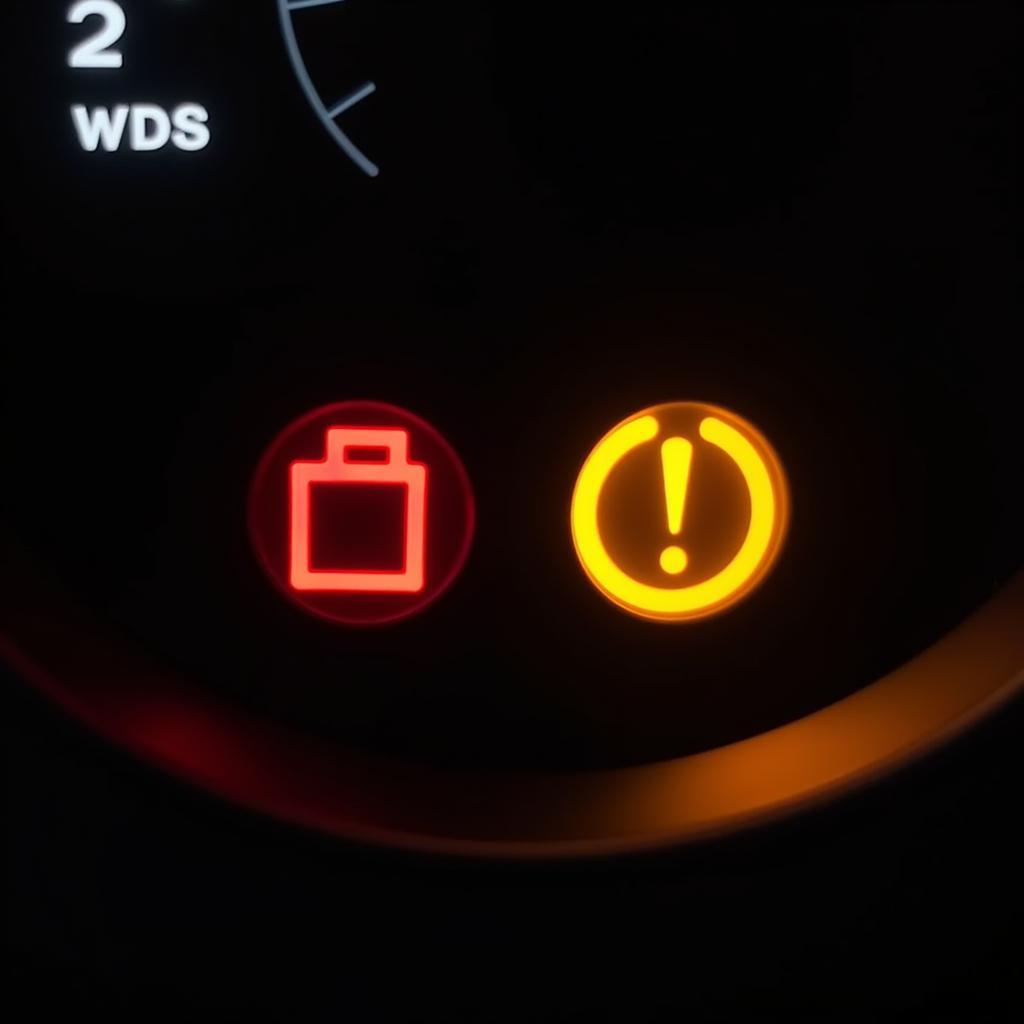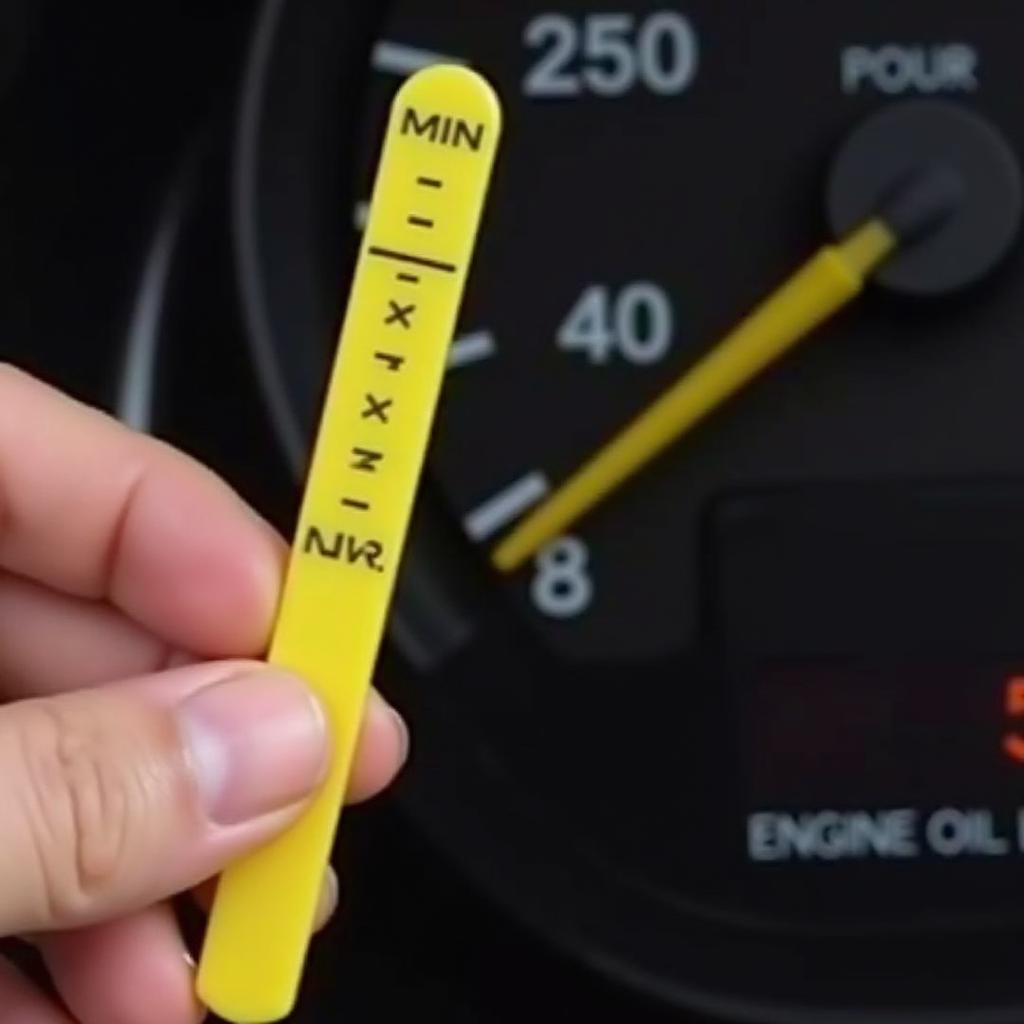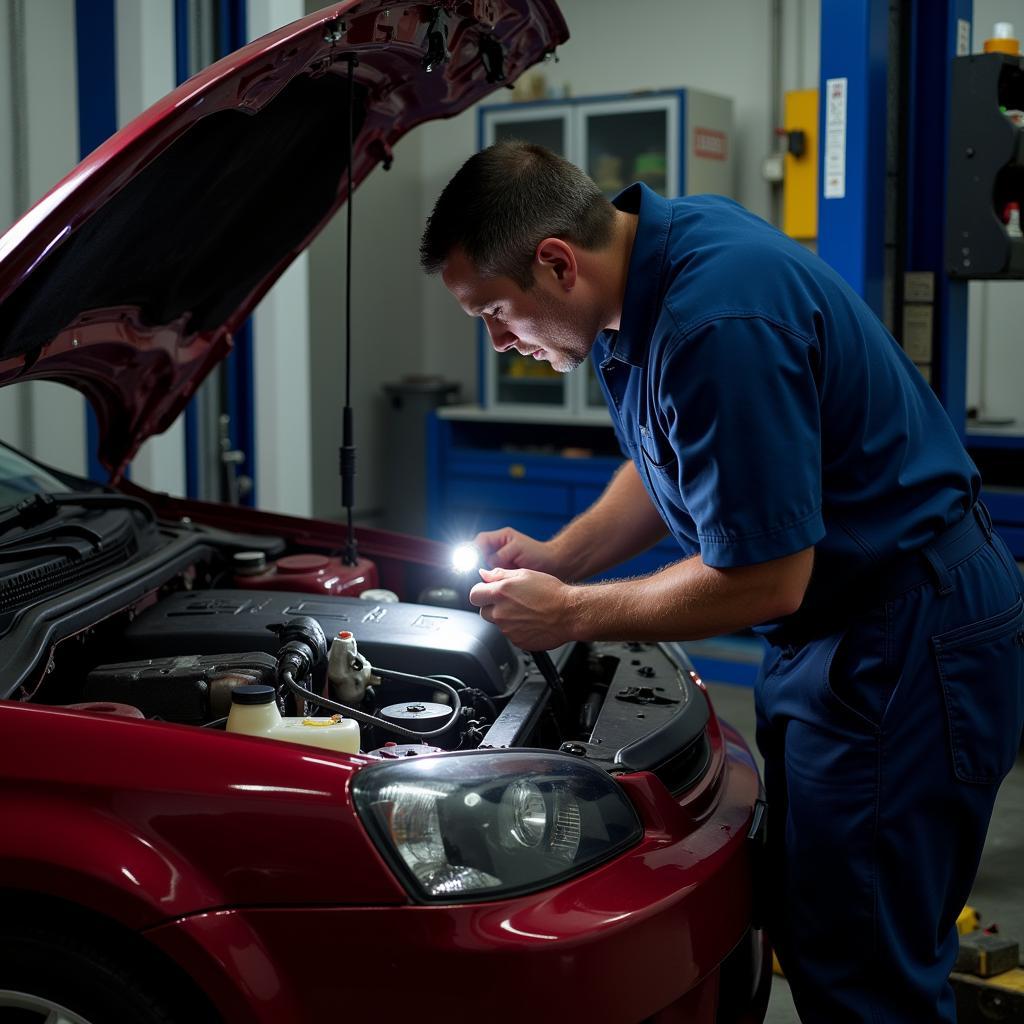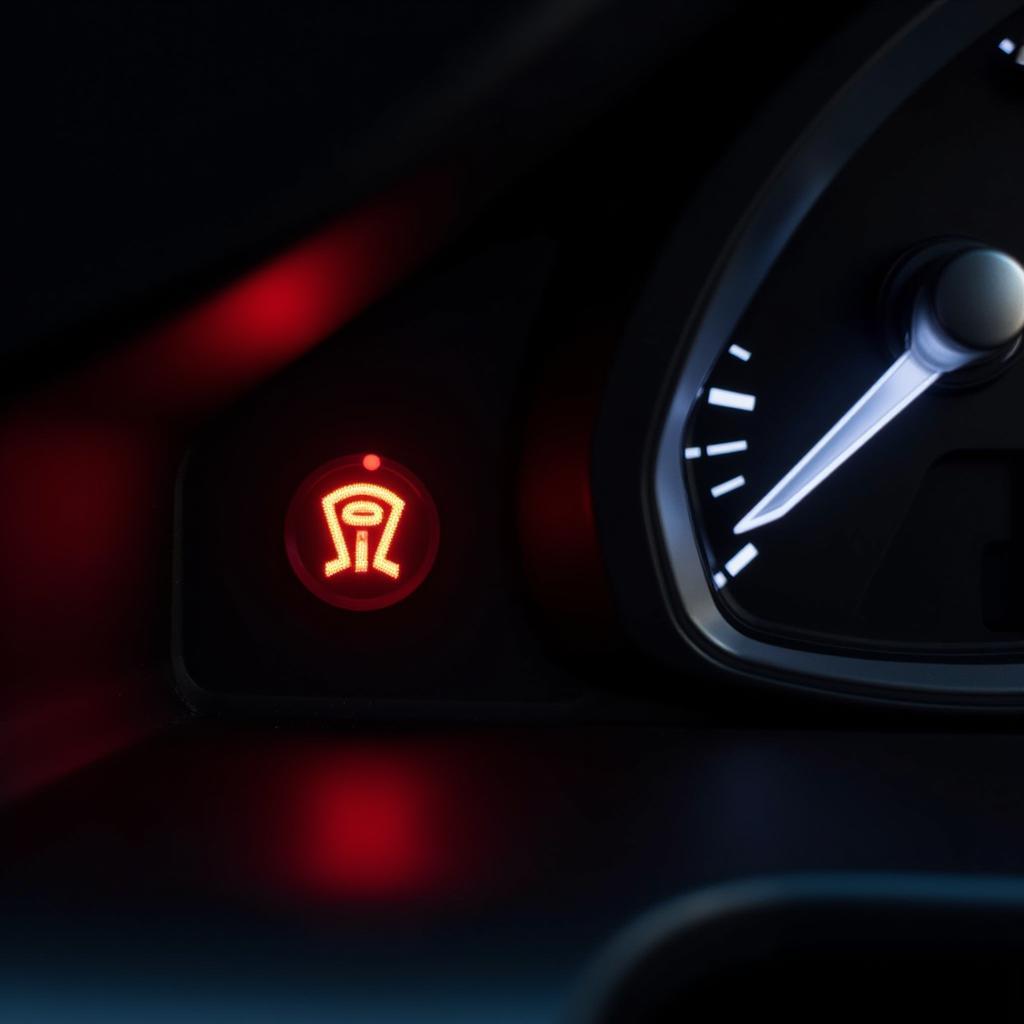Seeing your oil warning light illuminate on the dashboard can be unsettling, especially when it seems linked to braking. While these systems are separate, there can be connections between them. This article will delve into the reasons why your oil warning light might flash or stay on when you apply the brakes, explain the potential causes, and guide you on how to address this issue.
Understanding the Oil Warning Light
Your car’s oil warning light is a crucial part of the engine management system. It typically illuminates as a red oil can symbol on your dashboard. When this light comes on, it signals a problem with your car’s oil system, which could be related to:
- Low Oil Pressure: This is the most common reason for the oil warning light to activate. It indicates that the pressure in your engine’s oil system has fallen below a safe operating level.
- Low Oil Level: If there isn’t enough oil in your engine, the oil pump might not be able to maintain adequate pressure.
- Faulty Oil Pump: The oil pump is responsible for circulating oil throughout the engine. A failing oil pump won’t be able to maintain the required oil pressure.
- Worn Engine Bearings: Worn bearings can cause a drop in oil pressure, particularly when the engine is hot and the oil thins out.
Oil Warning Light and Braking: What’s the Connection?
While the braking system and the oil system are separate, certain scenarios can lead to the oil warning light activating when you apply the brakes. Here are a few possibilities:
- Extreme Braking: Hard braking can cause the engine oil to surge forward, momentarily pulling oil away from the oil pressure sensor. This is more common in older vehicles or those with low oil levels.
- Parking on a Steep Incline: Parking on a steep hill can cause the oil to pool away from the oil pickup tube, potentially triggering the oil warning light momentarily when you release the brake and start the engine.
- Faulty Sensor: It’s possible that the oil pressure sensor itself is malfunctioning. This could lead to false readings, including the light illuminating when braking.
 Car dashboard showing oil warning light and brake system warning light
Car dashboard showing oil warning light and brake system warning light
Troubleshooting Steps
If your oil warning light comes on when you brake, it’s crucial to address the issue promptly to prevent potential engine damage. Here’s a step-by-step guide:
- Check Your Oil Level: Find a level surface to park your car. With the engine off and cool, locate the engine oil dipstick, pull it out, wipe it clean, reinsert it fully, and then remove it again to check the oil level. Ensure the oil level is between the minimum and maximum marks. If it’s low, add the recommended oil for your vehicle.
- Inspect for Leaks: Look for any signs of oil leaks around the engine and under the car. Oil leaks can lead to low oil levels and pressure.
- Consider the Circumstances: Did the light come on after hard braking or parking on a steep incline? If so, and your oil level is fine, the issue might be temporary.
- Consult a Mechanic: If the light stays on, flickers consistently, or you’re unsure about any aspect of this issue, consult a qualified mechanic immediately. They can diagnose the problem accurately using specialized tools like an oil pressure gauge and advise on the necessary repairs.
Preventing Oil Warning Light Issues
- Regular Oil Changes: Adhering to your car manufacturer’s recommended oil change intervals is essential for maintaining proper engine lubrication and preventing oil-related issues.
- Use the Correct Oil: Always use the type and viscosity of oil specified in your owner’s manual. Using the wrong oil can affect oil pressure and engine performance.
- Address Leaks Promptly: If you notice any oil leaks, get them repaired as soon as possible to prevent the problem from worsening and potentially causing further damage.
 Person checking engine oil level using dipstick
Person checking engine oil level using dipstick
FAQs
1. Can I drive with the oil warning light on?
It is not recommended to drive with the oil warning light on. Continuing to drive with low oil pressure can cause significant engine damage. Stop driving as soon as it is safe to do so and address the issue.
2. How serious is low oil pressure?
Low oil pressure is a serious issue that can lead to catastrophic engine damage if ignored. The oil provides crucial lubrication to moving engine parts, and without it, those parts can overheat, wear down rapidly, and eventually fail.
3. Can a bad oil filter cause the oil light to come on?
While a severely clogged oil filter could theoretically restrict oil flow and contribute to low oil pressure, it is less likely to cause the oil warning light to illuminate when braking specifically.
 Mechanic inspecting a car engine
Mechanic inspecting a car engine
4. How much does it cost to fix an oil pressure problem?
The cost of repairing an oil pressure problem can vary greatly depending on the underlying cause. A simple fix, like replacing a faulty sensor, might be relatively inexpensive. However, more serious issues like a failing oil pump or engine damage can be significantly more costly.
Conclusion
Seeing the oil warning light come on, especially in conjunction with braking, should never be ignored. By understanding the possible connections between these systems and taking prompt action, you can help protect your engine from potential damage and ensure safe and reliable driving. Remember, regular maintenance and timely repairs are key to a healthy and long-lasting engine.

